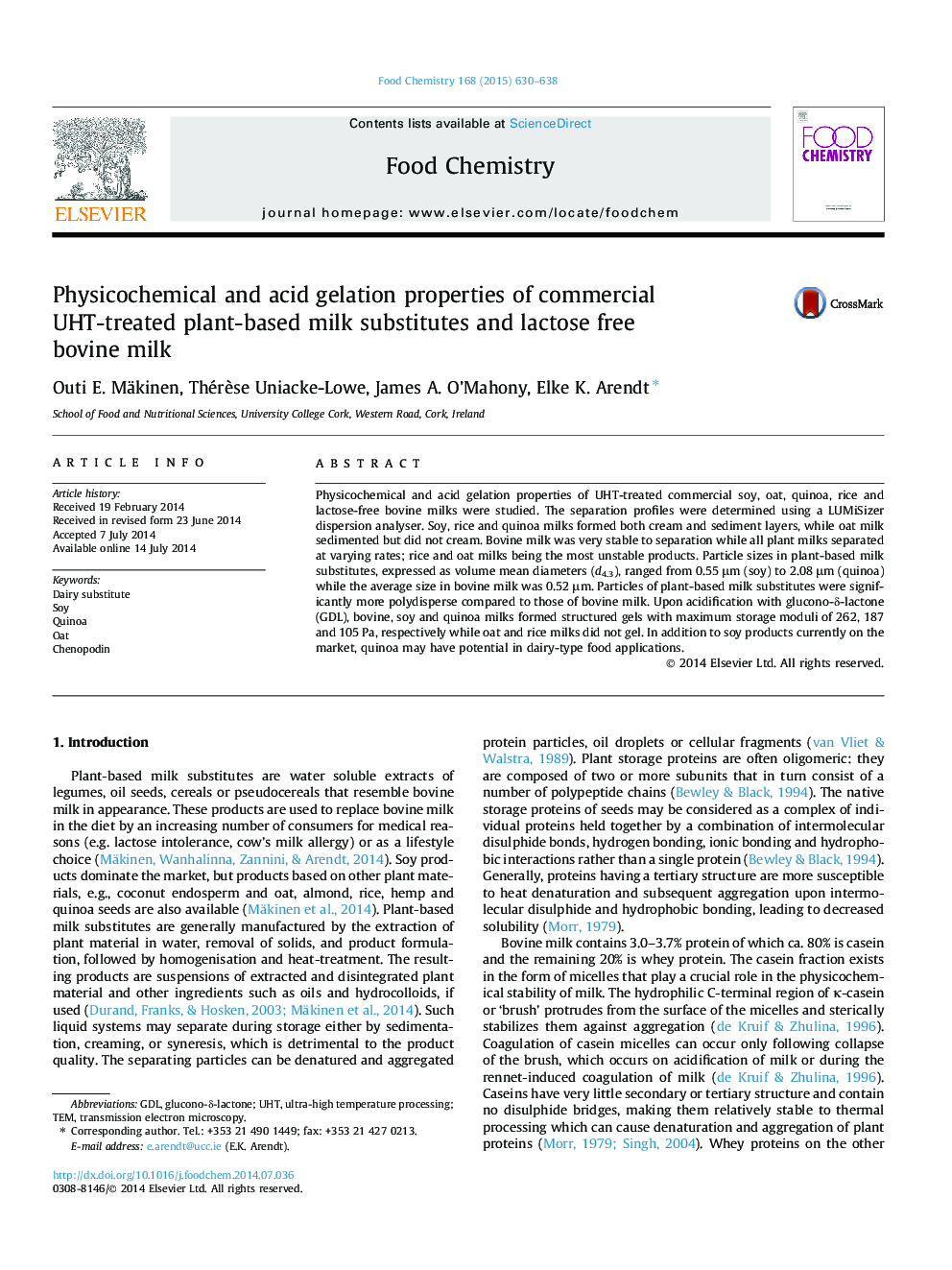| Article ID | Journal | Published Year | Pages | File Type |
|---|---|---|---|---|
| 7595494 | Food Chemistry | 2015 | 9 Pages |
Abstract
Physicochemical and acid gelation properties of UHT-treated commercial soy, oat, quinoa, rice and lactose-free bovine milks were studied. The separation profiles were determined using a LUMiSizer dispersion analyser. Soy, rice and quinoa milks formed both cream and sediment layers, while oat milk sedimented but did not cream. Bovine milk was very stable to separation while all plant milks separated at varying rates; rice and oat milks being the most unstable products. Particle sizes in plant-based milk substitutes, expressed as volume mean diameters (d4.3), ranged from 0.55 μm (soy) to 2.08 μm (quinoa) while the average size in bovine milk was 0.52 μm. Particles of plant-based milk substitutes were significantly more polydisperse compared to those of bovine milk. Upon acidification with glucono-δ-lactone (GDL), bovine, soy and quinoa milks formed structured gels with maximum storage moduli of 262, 187 and 105 Pa, respectively while oat and rice milks did not gel. In addition to soy products currently on the market, quinoa may have potential in dairy-type food applications.
Related Topics
Physical Sciences and Engineering
Chemistry
Analytical Chemistry
Authors
Outi E. Mäkinen, Thérèse Uniacke-Lowe, James A. O'Mahony, Elke K. Arendt,
